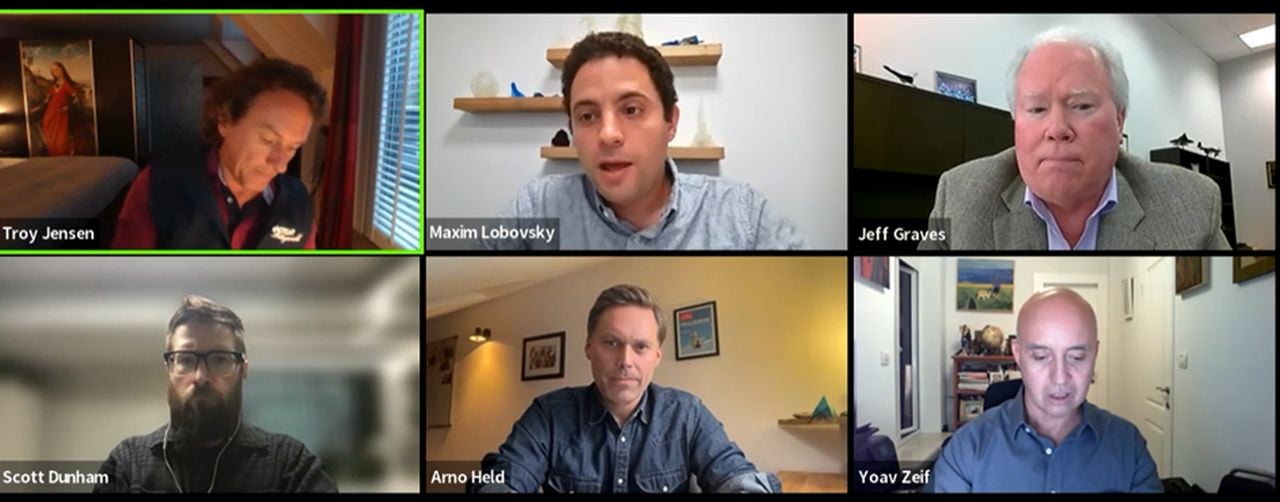
Charles R. Goulding and Preeti Sulibhavi cover the most recent AM Investment Strategies Roundtable discussion.
The November 2, 2023 webinar was full of insight from industry giants. The panel consisted of Troy Jensen, Jeff Graves, Maxim Lobovsky, Scott Dunham, Arno Held, and Yoav Zeif. The roundtable discussion concerning the future of investing in 3D printing was full of caution and optimism.
Here are some main takeaways from each panelist:
Yoav Zeif – Stratasys, CEO
The industry is strong, but stocks are low according to Zeif. He identified gaps in the industry. That includes an overly micro-economic outlook. Stratasys is focused on bringing new solutions that include hardware as well as new materials and improved software. Stratasys is working on improving its customized workflows as well.
Jeff Graves – 3D Systems, CEO
Graves began by sending everyone’s thoughts regarding the Israel-Hamas War. New engineering materials and new software platforms are in the works at 3D Systems. Graves highlighted low consumer spending due to high inflation. 3D Systems is taking a hit in its dental product sales.
Customer interest in adopting 3D printers on the manufacturing floor. Macroeconomic and geopolitical forces are not helping to bring the technology to scale.
Maxim Lobovsky – Formlabs, CEO
Making powerful technology more affordable is key to growing the market as well. Lobovsky quoted William Gibson, “The future is already here. It’s just not evenly distributed yet.” Formlabs wants to improve distribution. He added that post-processing must be improved in addition to hardware, software, and materials.
The industry in general has seen slower growth, but that has improved collaboration and consolidation opportunities.
Arno Held – AM Ventures, Health Managing Partner
Held spoke of things that can be produced from 3D printing technology including electromobility and clean-tech applications to solve climate challenges. 3D printing applications are not limited to aerospace/defense, etc.
To realize big volumes, the industry must stabilize existing technologies and improve the quality of current products and infrastructure, in addition to new products and platforms. This will help turn 3D printers into real manufacturing equipment.
Scott Dunham – AM Research, Exec VP
He is looking at market trends, market size, and economic outlook. He stated that Industry 4.0 cannot exist without 3D printing. The long-term outlook is good, just a challenging time right now. At the end of the day, most of the larger companies are well-positioned to develop the industry into the future.
The companies have seen deteriorating stock prices but if 3D printing technology was ever needed, it is now. It will help tackle the challenges and problems companies face in this market.
All panelists expressed excitement about the upcoming 2023 Formnext 3D printing event in Germany.
The Research & Development Tax Credit
The now permanent Research and Development (R&D) Tax Credit is available for companies developing new or improved products, processes and/or software.
3D printing can help boost a company’s R&D Tax Credits. Wages for technical employees creating, testing and revising 3D printed prototypes can be included as a percentage of eligible time spent for the R&D Tax Credit. Similarly, when used as a method of improving a process, time spent integrating 3D printing hardware and software counts as an eligible activity. Lastly, when used for modeling and preproduction, the costs of filaments consumed during the development process may also be recovered.
Whether it is used for creating and testing prototypes or for final production, 3D printing is a great indicator that R&D Credit eligible activities are taking place. Companies implementing this technology at any point should consider taking advantage of R&D Tax Credits.
Conclusion
The webinar confirmed that there was a need for industry consolidation. The Stratasys acquisition of Desktop Metal that never happened was mentioned. Questions about 3D printing service bureaus were asked and it was agreed that they are also part of the future commercial success of the industry. Ultimately, the true measure of success is bringing the technology to production floors.
